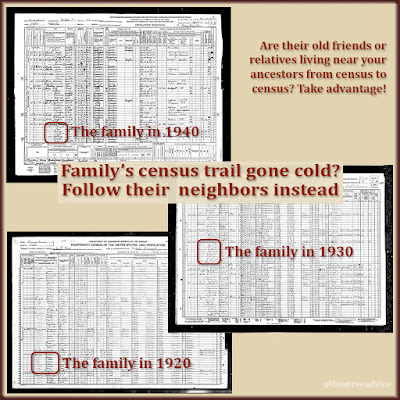You've probably realized that I spend countless hours buried in Italian vital records. But sometimes I do return to more conventional genealogy documents.
Last week I had a lead on an Italian family that came to America. The lead was a woman's name—an uncommon name that would be easy enough to trace. I soon discovered it was her husband who was my relative; my 2nd cousin twice removed.
When I found this family in several U.S. censuses, I realized I was out of practice with census forms. I hadn't dealt with one in quite a while. So let's have a little refresher course on all the steps to take each time you find a new census sheet.
How to Fully Process Your Census Documents
Since I hadn't added a new census form in a while, it helped that I had an old routine to fall back on. He's the short version, but please take a look at the step-by-step process:
- Follow your routine for how you name the document, assuming that you're downloading a copy.
- Follow your routine for where you file your census documents.
- Before you leave the webpage where you found the document, annotate the image with facts. Copy the URL, the source citation, and more.
- Examine the entire page for all the facts you can add to these people in your family tree.
- Add this fact to your document tracker so you never waste time searching for this document again.
 |
| When you're familiar with which facts to find on each census, you can develop a foolproof routine. |
How To Squeeze Everything Out of the Census
Each census form captured different facts about the people living in each household. Don't treat a 1900 census the same way you treat a 1940 census. There are different facts in there.
Here is a rundown on which facts the government added or removed from each U.S. census form from 1790 to 1940. And if you prefer a more visual style, see 3 Unique, Key Facts about Every U.S. Federal Census.
Were you surprised at the simplistic questions on the 2020 census? I was.
Simplify Your Genealogy Info Gathering With This Form
Download a free fill-in-the-blank PDF for U.S. census years from 1900–1940. They're great for genealogists who keep binders or folders on their different families.
 |
| How can you find your family when their name is always mangled in the census? Search for the neighbors that were nearby decade after decade. |
4 Tips for Finding a Missing Census Record
Of course these tips are worthless if you can't find that missing census form. We're at the mercy of transcribers and indexers. And sometimes names are impossible to read. But if you use these 4 tips, you'll increase your chances of finding that missing family:
- Search by address
- Search for the neighbors
- Search for first names only
- If all else fails, consult someone else's family tree for leads.
Be sure to read the practical details on how to use each of these tips to help you in your search.
When I did return to the 1900s and U.S. documents, it helped that I had such a strong routine to fall back on. Now, if you'll excuse me, 1800s Italy is calling me back.
When I have more time, I might try to do a similar worksheet for the UK censuses :) One of my genealogy goals for next year is to start going through and extracting all the details from documents for key ancestors...
ReplyDelete